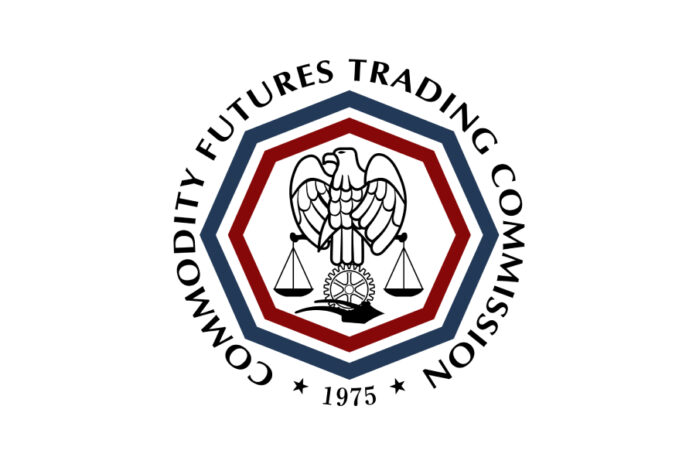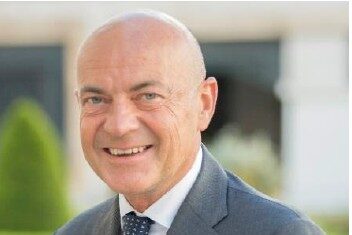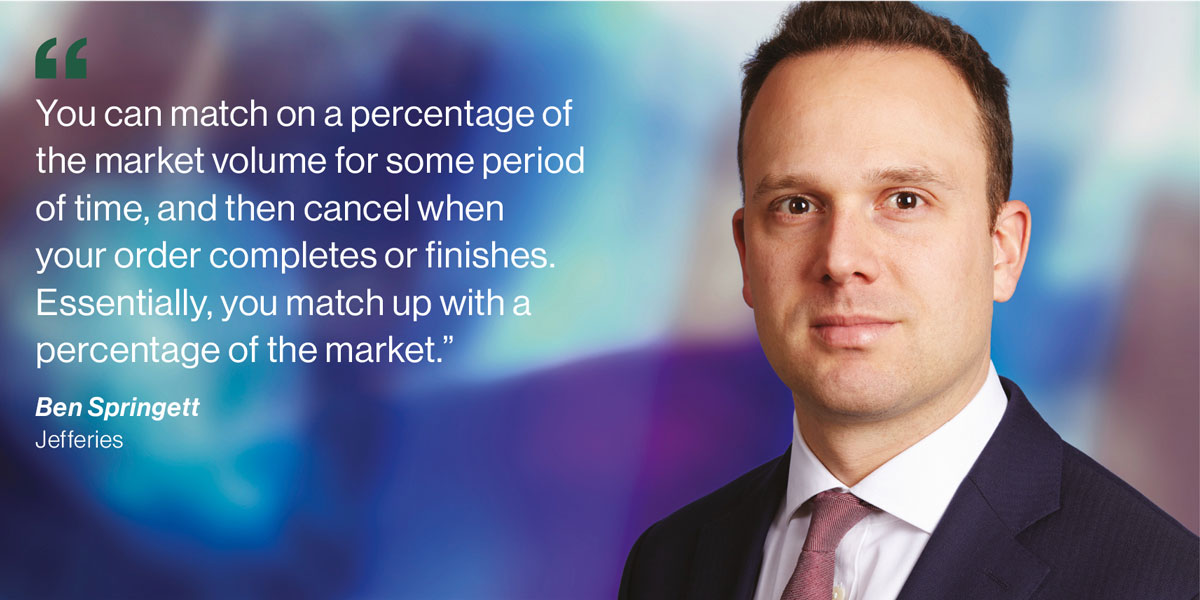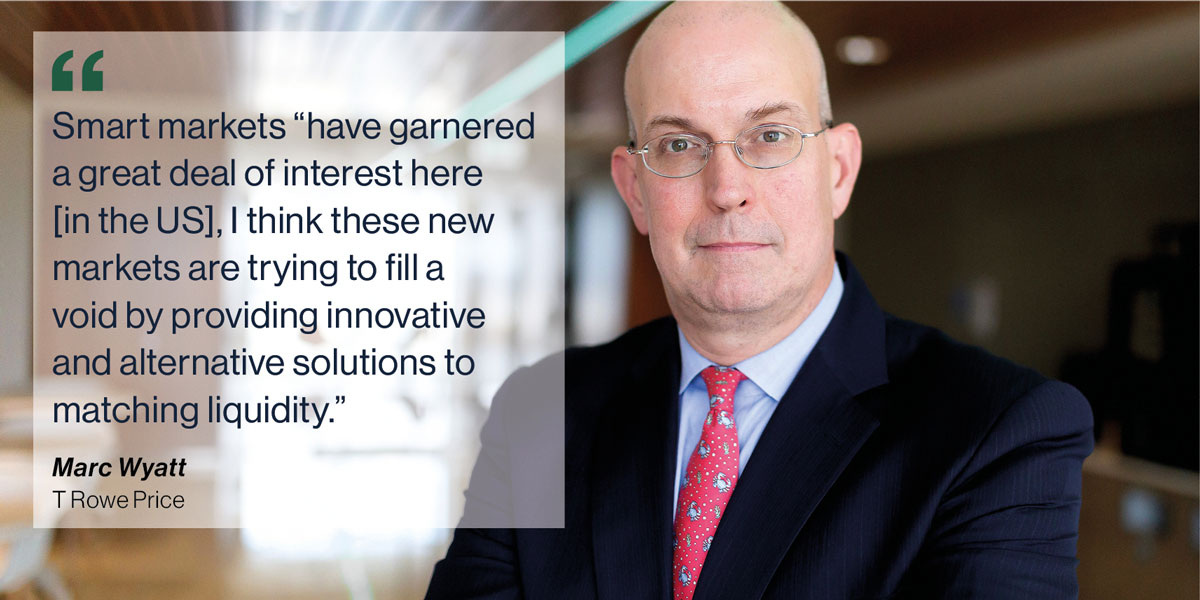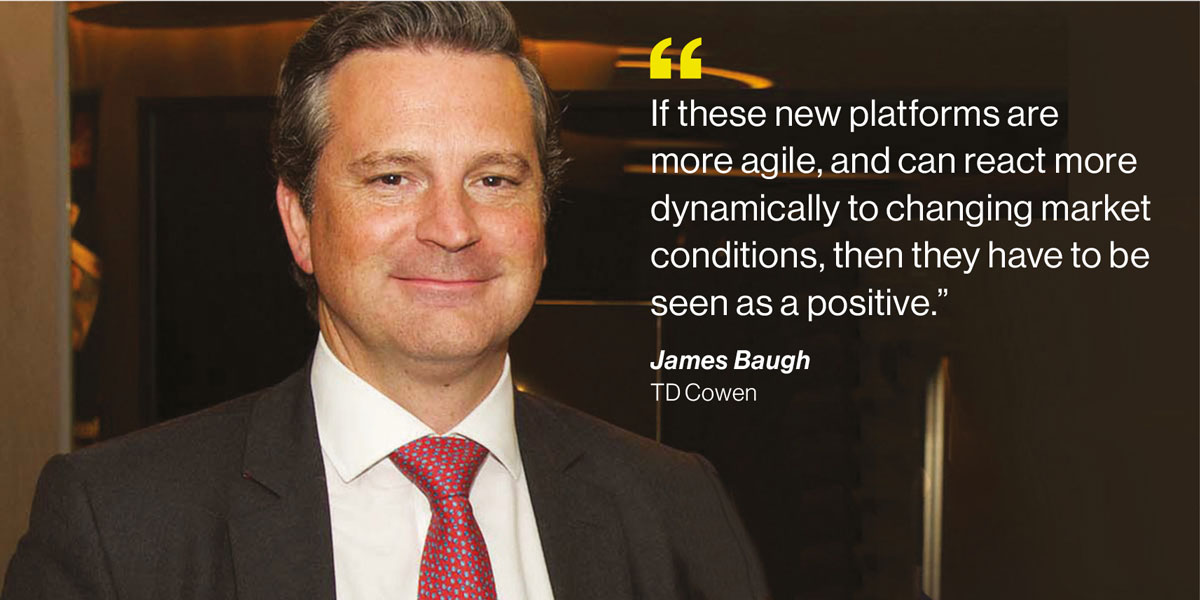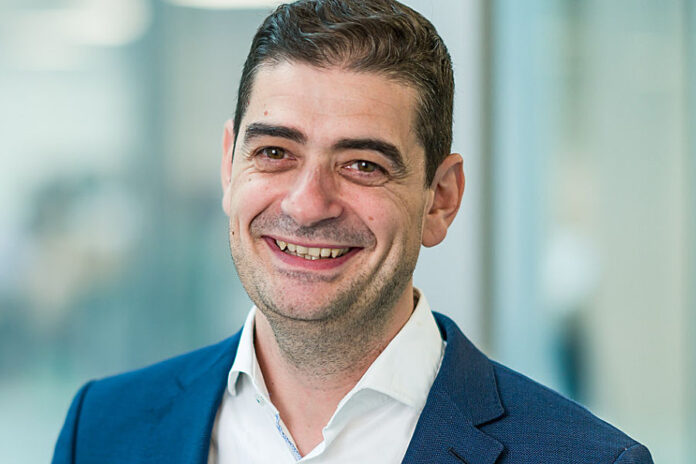The rise of alternative trading platforms offering unique matching capabilities through new technology has created a whole new channel of liquidity for those able to access it in the US market, but can it translate over into Europe – where liquidity is so desperately needed? Laurie McAughtry looks at the latest developments.
New, alternative trading systems (ATSs) in the US equity markets are providing competition to traditional venues which have historically used central limit order books to match both sides of a trade.
“Relying solely on lit markets is suboptimal,” says Enrico Cacciatore, senior advisor at CalcGuard Technologies and former head of market structure and trading analytics at Voya Investment Management. “ATSs can present lower fill probability and randomness. Small fills risk leakage when market makers anticipate future movements based on dark pool activity. These smart markets strike a balance – you minimise impact while still targeting benchmarks. They bridge the gap between lit and dark venues.”
“For 30 years, all ATS have provided one thing: execution in the middle of the market. The percentage of volume executed in the middle of the market is about 14%,” says Armando Diaz, CEO of ATS Purestream. “To systematically get to that remaining 86% of the volume clients need a new way. We’re enabling broker-dealers, and ultimately the buy side, to trade at all five points of the NBBO by referencing each market trade.”

“‘Smart market’ is the technical term for a platform that matches counterparties using mathematical optimisation,” says Scott Bradley, UK CEO for AT OneChronos Markets.
“Many of these platforms operate as ATS, but offer unique advantages,” explains Cacciatore. “These new hybrid venues function akin to specialised retail storefronts, that cater specifically to unique liquidity needs, evident through proxies such as percent of volume (POV) or anticipated volume-weighted average price (VWAP) over a given timeframe. This approach not only demystifies liquidity profiles for clients but also empowers them to engage in more nuanced discussions with their brokers, centred around optimising their transactions based on these liquidity indicators.”

The big players
Several new offerings have garnered attention in this space recently. One of these is OneChronos, which in the US operates a periodic auction dark pool, with a strong focus on quality of execution over speed. Auctions are run 10-20 times per second throughout the trading day, optimising for best execution match outcomes. The periodic auction is fully dark in the US, Bradley clarifies, with no pre-trade transparency before a trade is executed.
“We’re using mathematical optimisation techniques coupled with AI to run a model that takes into account all trading requirements and constraints of buyers and sellers, in totality, in order to achieve the best overall trading outcomes possible,” explains Bradley. “We’re addressing the gap between how trading venues and orders have been brought together, and how the market would like to execute going forward.”
PureStream, another US-based firm, is a volume-based trajectory crossing venue. It uses a trajectory matching protocol that executes orders by referencing the volume, and associated price, of each trade printed to the SIP as they occur. Each firm and conditional order sent to the ATS will include a symbol, size, price, market side, a liquidity transfer rate (LTR). Matched orders receive execution fills, including partial fills called “child fills.” Fills are a pre-determined percentage of each SIP reported trade, at the printed price. Similar to orders placed in a percentage of volume execution algorithm, the PURE ATS will produce a series of “child fills.” This series of child fills is called a “stream”. A stream will continue uninterrupted between two matched orders so long as both orders have quantity and remain “marketable.”

Price discovery is achieved through setting a mid-price, based on trades occurring in the marketplace as reported to the consolidated tape (SIP). This is designed to provides traders with an alternative to discovering prices purely from the national best bid and offer quote.
PureStream’s business model is described simply by the firm: Match with compatible liquidity. No selling data. No market makers. No payment for order flow.
“It’s about increasing the bandwidth of liquidity transfer between them,” explains Diaz. “The order enters into our book, is matched with one or more orders at a percentage rate, and we apply that percentage rate to each trade that happens contemporaneously in the market.”
Eric Stockland, managing director of electronic trading at BMO Capital Markets, says, “[It’s] a new way of trading in which a buyer and seller are willing to trade with each other without knowing the specific price and time at which those trades will happen. The utility is not in having the winning side of a given trade but in achieving a fair price for both parties and tracking the average price over time. PureStream’s rate-based trading reduces tracking error to multiple benchmarks and acts as a form of segmentation because both parties have some future price risk that is not easily controlled.”

“Streaming is an innovation that we wanted to really impact institutions,” Diaz says. “It has to work with the buy side’s workflow, especially through broker algorithms. We’ve integrated with institutional brokers to get to the whole market quicker—it would take us forever to build a network doing this one-to-one with each buy-side firm, and I don’t think it would have worked.”
“I think of [trajectory crossing] as a period of time crossing venue,” says Ben Springett, EMEA head of electronic and programme trading at Jefferies. “You can match on a percentage of the market volume for some period of time, and then cancel when your order completes or finishes. Essentially, you match up with a percentage of the market. That percentage could be meaningfully larger than the shares that are hitting the tape. If you’ve got a requirement to execute along with volume on some sort of profile or type basis, then you could achieve that objective without having to impact price formation on the lit market.”
There are several other platforms offering trajectory crossing in the US – including Level ATS from Kezar Markets, and Trajectory Cross from Morgan Stanley.
However, Springett notes there are risks that need to be managed when using trajectory crossing, such as increasing counterparty risk and information leakage, which vary from platform to platform according to the way trades are managed. This can affect user engagement he explains.
“Rather than continuing to match, I might match for a couple of minutes and then say ‘I’m going to stop trading trajectory cross for a bit. I’m going to pull out of the market entirely’. You now have to go into the market to have some sort of price impact, and I’m going to come back later on and pick up stock at a more favourable level because of your impact. I’ve used that information that you’re willing to do a trajectory cross with me as a signal of the pressure potentially coming on that stock which will move it in my direction,” he explains.
Jefferies is managing risk through careful engagement with specific platforms. “You don’t know who the counterparty is you’re matching against,” notes Springett.

PureStream and OneChronos feature “purposeful indeterminism”, adds Stockland. “Firms willing to incur a bit more variance in their execution price can ironically source more stable trading outcomes and improve the average execution quality” by using them.
The two platforms aim to improve execution quality for institutional investors, something Stockland says is aligned with market structure alternatives.
Another contender, IntelligentCross from Imperative Execution, uses a machine learning/AI-based calibration process to optimise price discovery. It aims to provide both execution quality and liquidity for its clients, the company told Global Trading: thus minimising price impact while maximising liquidity.
“IntelligentCross matches orders at discrete times, when the price is expected to be stable, calibrated per-security, using a matching logic that allows the venue to continuously improve and adapt to changing market conditions,” explained Roman Ginis, CEO of Imperative Execution and founder of IntelligentCross, meaning that it frequently reports better price offers than those provided by the national best bid offer.
“Investors can access more liquidity, more price improvement, and less market impact, and thus, better performance,” he continued. “They don’t have to compromise or leave money on the table.”
A helping hand
Smart markets “have garnered a great deal of interest here [in the US]”, affirms Marc Wyatt, global head of trading at T Rowe Price. “I think these new markets are trying to fill a void by providing innovative and alternative solutions to matching liquidity,” he muses, “but I just don’t know if they’ll be able to garner the share that they’re expecting in a short period of time.” They’ll have to “find their niche”, determine a way to truly stand out from competitors, he explains.

T Rowe Price engages with such alternative venues in order to determine whether they really do provide the better outcomes that they advertise. “Every market participant needs to have their head on a swivel to constantly check for new innovations of this kind,” he explains. “You can ignore them at your peril.”
Providing different liquidity channels gives firms a greater scope of choice, allowing them to more accurately cater to the objectives of their clients. But they haven’t taken off everywhere yet.
US markets are ahead of Europe when it comes to innovation in this space. This is mainly due to having fewer rules to follow, according to Springett.
When it comes to trading venues, “the regulatory landscape in Europe is much more restrictive”, he says. “It stifles innovation – the models that exist in some of the US venues just won’t work [in Europe], the rules don’t allow it.”
Springett advocates for a market-led execution landscape, where the industry determines what mechanisms and restrictions it needs to have in place in order to meet execution needs. “We don’t need some sort of superlative protection from Brussels in order to succeed in this environment,” he says; taking a prescriptive approach, with all market participants pushed to operate in the same way, will keep European markets behind their US counterparts.
“These venues are giving us a better trading performance in the US,” he says. “They reduce our cost to trade, and from a dark pool perspective, there’s a much better quality than in Europe.”
“The US market has the advantage of working within one regulatory framework, which is extremely ‘rules-based’ versus being interpretive,” adds Ginis. In Europe, there’s been an uptick in entrants to the multilateral trading facilities space, and “there seems to be opportunities for more innovation,” he observes.
Opportunities across the pond
“There’s a question of whether we need more execution opportunities in Europe, whether the market is too fragmented given the liquidity squeeze,” reports James Baugh, managing director and head of European market structure at TD Cowen, a division of TD Securities. “These need to be asked, but if these new platforms are more agile, and can react more dynamically to changing market conditions, then they have to be seen as a positive.”
“These offerings are trying to create liquidity opportunities that might not be immediately obvious,” Baugh explains. “This could be interesting, especially when we’re suffering from a liquidity squeeze across the markets.”
The segmentation of flow could also act as a differentiator, he says, granting firms greater control over their counterparties, who they interact with and who they are trading against.

“At TD Cowen, a lot of the analysis that we do around liquidity interactions is trying to understand the makeup of that counter liquidity, knowing that our experiences will be different with different venues,” Baugh explains. Introducing a hierarchical approach could be impactful, he muses, allowing firms to transfer more control to brokers and end investors.
“The US markets are awash in alternative ways to source liquidity that limit pre-trade information leakage and produce higher quality execution outcomes for non-high frequency trading firms,” states Stockland. “Simply put, both OneChronos and PureStream solve for problems like latency arbitrage in different ways.”
He advocates strongly for the introduction of these markets into Europe, as sources of competition and execution improvements. However, he acknowledges the advantage the US sees in market structure.
“There’s just a bigger pool of liquidity in the US,” Baugh says. “You’ve got order rule protections and trade-through rules that mean brokers have to connect to these platforms as part of the regulatory framework—that also helps to seed liquidity.”
When considering making the move into Europe, “the big issue is the reference waivers,” says Diaz. “In the US, every trade we produce by referencing another market trade has regulatory clarity in reporting it to the tape,” he explains. Currently, this is challenging in Europe. “We are fortunate to have a great partner in NASDAQ who has publicly announced plans to offer streaming to European investors via their Nordic Exchanges.”
Providers will need to prove that they’re adding value rather than just increasing fragmentation in European markets, Bradley adds.
Time to grow
Europe has “led the charge” in periodic auctions, Baugh states. With a number of ATS initiatives in the US now looking to these as a way to get a foothold in the market, are they really offering anything different?”
“They’ll all come at it from a different angle,” he says. “One of the challenges that these initiatives will have is the education piece – showing why their way of doing things will lead to better outcomes than traditional order books. There has to be a point of difference.”
“Right now, there’s not enough liquidity to go around. But these things take time – markets aren’t going to be opening their doors tomorrow.”
“There’s plenty of time for folks to get their heads around these platforms, and for the markets to turn a corner and see more turnover, more velocity,” he says, envisioning a few years of lead time on the shift.
©Markets Media Europe 2024

